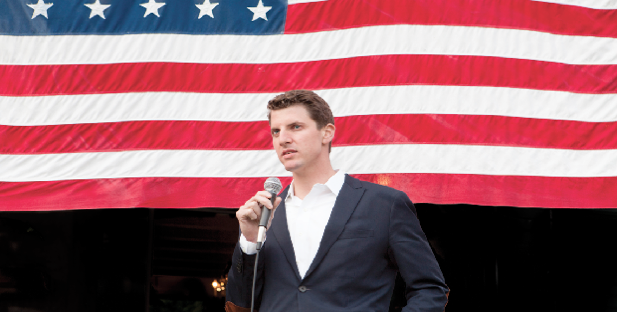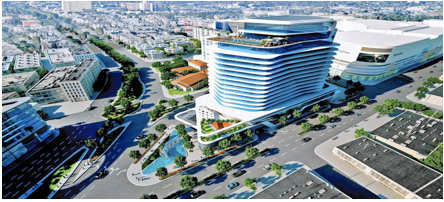Update! Mansionization in Los Angeles: Bad News and Good News
PLANNING WATCH--First, the bad news. I live in the Beverly Grove neighborhood, and so far we have lost over 75 of our homes, or about 12 percent, to McMansions. The mansionization process was only dampened down recently through a new Residential Floor Area District (RFA), adopted in 2014 after a decade of hard campaigning.
The good news is that my neighborhood is represented by the Beverly Wilshire Homes Association (BWHA), a community organization that has steadfastly represented the residents of the greater Fairfax area on land use issues for over 50 years. During the past ten years, the BWHA has also been a leader in citywide efforts to restrict McMansions in Los Angeles neighborhoods because its own neighborhoods, especially Beverly Grove, became the epicenter of mansionization.
This is why the BWHA strongly supports Councilmember Koretz’s original Council Motion, instructing the Department of City Planning to remove all Baseline Mansionization Ordinance loopholes that promote mansionization, such as the three alternative 20 percent bonuses, as well as the inexplicable exemption for 400 square feet of attached garages.
This is also why community organizations, such as the BWHA, consider the second version of City Planning’s BMO/HMO amendments to be a major step in the wrong direction. Be reinserting so many prior and new loopholes, City Planning’s draft amendments again ensure that mansionization will continue – despite the City Council’s unanimous and straightforward instructions to finally stop mansionization. City Planning’s job, therefore, could not be simpler: prepare amendments to the Baseline Mansionization Ordinance that remove its loopholes. In fact, the Beverly Wilshire Homes Association prepared such a simple draft ordinance, and then submitted it to both City Planning and to Council District 5 over a year ago.
Furthermore, our neighborhood has learned through the school of hard knocks that LA’s Department of Building and Safety is either incapable or unwilling to enforce existing mansionization ordinances and code violations, such as the consistent failure of contractors to post on-site demolition and building permits.
It should therefore be no surprise when we predict that Department of Building and Safety will not understand nor reliably implement the complicated mansionization ordinance that City Planning is now unveiling at public hearings. It will be easily gamed by contractors and realtors since they are already emboldened by the City of LA’s current blasé approach to mansionization.
The other good news is the firm position taken by Councilmembers Paul Koretz and David Ryu in their May 4, 2016, letter to the new Director Of Planning, Vince Bertoni. They implored Mr. Bertoni to stick to the purpose of the City Council’s May 16, 2014, motion: “It is imperative that the Planning Department achieve the intent of protecting residential neighborhoods well before the patchwork of Interim Control Ordinances…expires in March 2017.”
SPECIFIC CONCERNS OF THE NEIGHBORHOOD GROUPS ABOUT THE DRAFT MANSIONIZATION AMENDMENTS:
The Councilmembers were, in effect, responding to the express concerns of the Beverly Wilshire Homes Association and other kindred neighborhood organizations intent on heading off another sham mansionization ordinance at the pass. Their concerns fall into six categories:
- The city’s Baseline Mansionization Ordinance and Baseline Hillside Ordinance (BMO/BHO) failed because they contained too many bonus and exemption loopholes. Despite the adoption of these ordinances, mansionization has relentlessly continued to ruin neighborhoods over the entire city. In this legislative round City Planning therefore needs to draft the new amendments correctly. This means removing all old and new loopholes that promote the construction of McMansions. If the proposed ordinance fails to do this, it will be the sixth bogus attempt to stop mansionization by green lighting over-sized houses through a host of loopholes that undermine the City Council’s intention.
- Mansionization eliminates affordable housing in LA’s single-family neighborhoods. As a result, it contributes to the housing crisis that most Angelenos, including elected officials, are painfully aware of. The mansionizers target smaller, affordable houses for demolition. They then quickly and cheaply replace them with McMansions that are, on average, three times the size and price of these smaller, energy-efficient demolished homes. These investors and contractors are now eliminating about 2000 such affordable houses per year, and this loss of affordable homes will continue until it is finally stopped through an effective mansionization ordinance, not another phony one.
- Attached garages and uncovered or “lattice roof” patios, breezeways, and balconies should be counted as floor space. As evidenced by LA’s existing McMansions, these exempted architectural features are standard McMansions features, and they substantially increase the size of a house. The amended BMO/BHO needs to totally close these loopholes and count attached garages and all patio, deck, and breezeway features as floor space.
- All square footage bonuses must be deleted. The City Council directive to City Planning was clear. Any bonus that promotes mansionization should be stricken since these bonuses can add 600 square feet or more to the size of a house. In some isolated cases these additions might be warranted, but all such cases must be treated as discretionary actions. City Planning must send out notices for them and then conduct a public hearing, followed by a written and appealable determination. City Planning must also spell out its reasons for increasing the size of a house through proper legal findings.
Furthermore, any granted discretionary bonus should be based on the net livable footprint of the first floor, not uninhabited areas, such as garages and storage facilities. Finally, any mansionization procedure that allows the Department of Building and Safety to increase the size of a house through a secret ministerial decision must be eliminated.
- Interim Control Ordinances (ICO) now offer short-term protection to approximately 23 neighborhoods heavily impacted by mansionization, with other besieged neighborhoods also clamoring for similar ICO protection. In the event that the adopted BMO/BHO amendments are more restrictive than existing ICO provisions, the more restrictive provisions should prevail. This will prevent the contradictory situation of ICO neighborhoods, such as North Beverly Grove, that now have an ICO that is more permissive than the anticipated citywide mansionization amendments.
- Re:code LA should only proceed in residential areas once the City Council adopts simple and straightforward amendments to the Baseline Mansionization Ordinance and the Hillside Baseline Mansionization Ordinance. Folding citywide re:code zoning provisions, such as “side wall articulation” and “encroachment planes,” into the BMO and BHO amendment process slows down and undercuts the express directions of the City Council: quickly remove the loopholes from the Baseline Mansionization Ordinance.
CityWatch readers can keep informed about amendments to the City’s two mansionization ordinances through the following website: nomoremcmansionsinlosangeles.org/. You can also become a friend of the No More McMansions in LA Facebook page, and send an email to [email protected] to receive periodic updates.
(Dick Platkin is a former LA City Planner who reports on planning issues for CityWatch. He is also on the Board of the Beverly Wilshire Homes Association and welcomes questions, corrections, and comments at [email protected].)
-cw




































